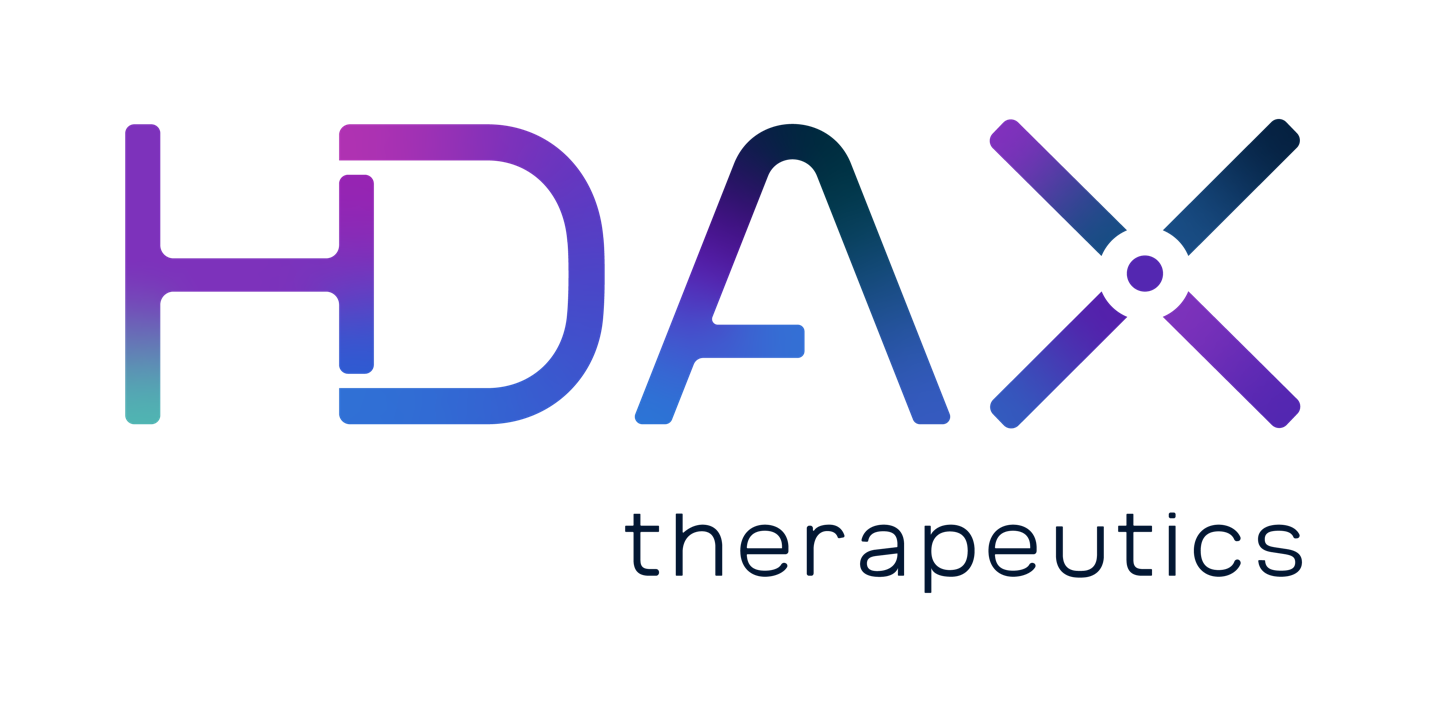HDAX Therapeutics
HDAX Therapeutics
HDAX Therapeutics
Company Overview
Innovation: Developing next-gen therapeutics for improved patient outcomes via best-in-class approach for targeting disease driver, HDAC6.
Targeted Cancer(s): chemotherapy-induced peripheral neuropathy, ovarian, endometrial
Scientific Leadership/Leadership: Bertrand Le Bourdonnec, Nabanita Nawar, Pimyupa Manaswiyoungkul
Stage of Project/Company: HDAX is a preclinical stage biotech company undergoing lead optimization to reach development candidate nomination.
Opportunity
Traditional drug design has been notoriously challenging in targeting crucial biological molecules, leading to poor patient outcomes. HDAC6, a validated drug target for oncology, neurological, inflammatory and cardiometabolic/renal diseases has seen limited innovation in its targeting, resulting in poor efficacy, off-target toxicities and inadequate exposure. HDAX was purpose-built to disrupt the inadequacies in current treatment of severe diseases, by transforming the way key biological disease drivers such as HDAC6 are targeted.
Harnessing our unique molecular recognition platform technology, we have devised an innovative 2-site binding mechanism for best-in-class HDAC6 targeting. This breakthrough tackles key drug-design challenges, such as weak binding, off-target toxicities, and less than optimal pharmacokinetics, paving the way for potentially transformative therapeutic benefits for patients.
Unmet Medical Need
HDAX’s goal is to deliver disease-modifying treatment for indications with insufficient standard of care starting with chemotherapy-Induced peripheral neuropathy (CIPN), a condition experienced by up to 80% of cancer patients which has no drug that can slow, halt, prevent or reverse the disease, leaving the patients with only symptomatic management. At HDAX, our next-generation HDAC6 inhibitors presents a promising approach for the treatment and potentially prevention of CIPN. Our never-seen-before bitopic binding mode enables enhanced target engagement which translates to improved potency and selectivity as well as scaffold condensation which allows our compounds to passively penetrate the blood-brain-barrier. This advantage unlocks the ability to address peripheral nerve degeneration sufficiently, while also tackling cognitive impairment, an additional adverse effect of chemotherapy seen in up to 75% of patients. Combined with our validated geno-safety and in vivo tolerability, these distinguishing factors allow our molecules achieve broader dosing regimens while improving safety and efficacy profiles. Preliminary in vivo efficacy studies in cisplatin-induced model have shown that treatment with our lead candidate resulted in complete reversal of mechanical allodynia and numbness while fully restoring cognitive impairments, highlighting the potential of HDAX molecules as a true disease-modifying therapy to improve patient outcomes.
Differentiation
- Improved potency and selectivity: Inherent optimized molecule properties have lead to strong pharmacodynamics resulting in full disease reversal in numerous models ( chemotherapy-induced peripheral neuropathy (CIPN), Charcot Marie Tooth disease (CMT), diet-induced obesity (DIO)) animal model, with clear differentiation in pathology.
- Improved pharmacokinetics: Developed distinct peripheral-selective and brain penetrable assets with demonstrated in vivo t1/2, plasma of 2-4h, t1/2, brian ~20 min, strong passive permeability and solubility with no efflux, long residence time and high exposure. These properties highlight the potential for improved clinical dosing regimen.
- Med-chem superpower enables a template for discovery of HDAC6 inhibitors and degraders, with know-how to expand into a platform for other targets.
Asset Profile & Development Plan
Potency: single digit nanomolar to picomolar potency against HDAC6
Duration of Action: lead optimization underway, targeting daily dosing
Safety and Tolerability: Well-tolerated in mouse model with no preliminary safety concerns.
Intellectual Property: Exclusive licensing obtained from University of Toronto with numerous chemical composition of matter patents filing underway. Guided by expert counsel at Mintz, HDAX’s IP are well protected and positioned for advancement and potential licensing.
Clinical Development Plan: HDAX aims to nominate a development candidate to advance towards IND-enabling studies in 2026.


